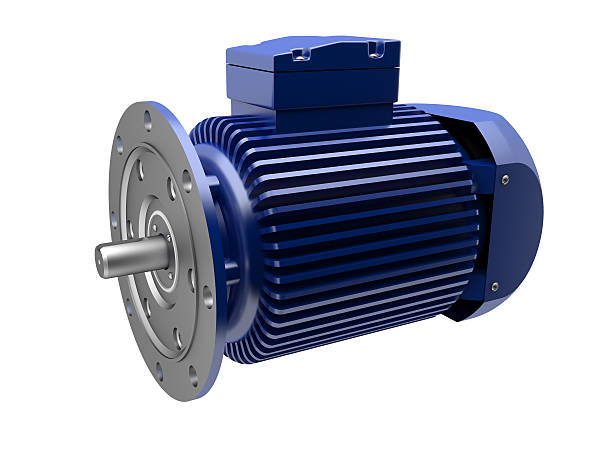As an indispensable power equipment in modern industry and daily life, the stability and reliability of the performance of the motor is crucial for the normal operation of various equipment and systems. Temperature is one of the important factors affecting the performance of motors, and changes in temperature not only affect the efficiency, life and reliability of motors, but also may cause safety problems. Therefore, it is essential to understand the impact of temperature on motor performance and how to control motor temperature.
The source of motor temperature
The temperature of the motor mainly comes from two parts: one is the motor operation, due to the current in the conductor generated by the resistance of the heat; the other part is due to the friction of the internal parts of the motor and the external load applied to the motor mechanical energy converted to heat. These heat, if not emitted in a timely manner, will lead to an increase in the temperature of the motor.

The impact of temperature on motor performance
Efficiency decline: as the temperature rises, the efficiency of the motor will gradually decline. This is because the rising temperature will lead to an increase in the motor’s copper loss and iron loss, thus reducing the motor’s output power.
Decrease in output torque: Elevated temperatures also result in a decrease in the motor’s output torque. This is because at high temperatures, the resistance and magnetism of the motor’s windings and magnets change, which affects the torque output.
Reduced insulation life: The insulation inside the motor tends to deteriorate at high temperatures, which reduces the life of the motor. If the temperature is too high, it may also lead to thermal decomposition and thermal breakdown of the insulating materials.
Increased vibration and noise: Thermal expansion and thermal deformation inside the motor at high temperatures can cause increased vibration and noise, thus affecting the normal operation of the motor.
Thermal Expansion and Thermal Deformation: High temperatures can cause thermal expansion and thermal deformation of internal parts of the motor, which can cause mechanical stress and lead to unstable motor operation or premature wear.
Lubricant performance decline: high temperature will reduce the viscosity of the lubricant, affecting its lubrication effect, thus increasing the friction and wear inside the motor.
The motor temperature control methods
Reasonable design of motor structure: By optimizing the structural design of the motor, the generation and accumulation of heat can be reduced. For example, the use of reasonable winding layout and coil design can reduce copper loss and iron loss. In addition, reasonable ventilation design and heat dissipation design are also important means to reduce temperature.
Selection of suitable insulating materials: Selecting insulating materials with high temperature resistance and long life can improve the heat resistance and service life of the motor. In addition, increasing the thickness of the insulation material appropriately can also slow down the aging process.
Installation of heat sinks: the installation of heat sinks or fans on the motor shell can help dissipate the heat generated by the generator. For some large motors, water cooling or oil cooling can also be used to dissipate heat.
Regular maintenance and cleaning: Regularly check the operating condition of the motor, clean up the dust and debris inside the motor, can help improve the heat dissipation effect and reduce the accumulation of heat. At the same time, check the condition of the lubricating oil to ensure that its quality and quantity meet the requirements.
Use thermal protector: Installing a thermal protector on the motor can automatically cut off the power supply when the temperature is too high and protect the motor from high temperature.
Optimize the operating environment: Keeping the motor’s operating environment clean and well-ventilated can help reduce the impact of ambient temperature on the motor. In addition, controlling the load and speed of the motor can also reduce heat generation to a certain extent.
Adopt advanced temperature measurement technology: By installing temperature sensors and using advanced temperature measurement technology, the temperature change of the motor can be monitored in real time, and abnormal conditions can be found and dealt with in time.
Adoption of advanced cooling technology: such as the use of liquid cooling technology, heat pipe technology and other advanced cooling technology can effectively reduce the operating temperature of the motor, improve its stability and reliability.
Temperature monitoring and alarm system: through the establishment of a perfect temperature monitoring and alarm system, the temperature can be abnormal in time to issue an alarm, so that operators can take timely measures to deal with abnormalities.
In short, the impact of temperature on the performance of the motor is multi-faceted, so the method of controlling the motor temperature also need to consider a variety of factors. Through reasonable design, selection of suitable materials, installation of heat dissipation devices, regular maintenance and cleaning, the use of thermal protectors and other measures of comprehensive application, can effectively reduce the impact of temperature on the performance of the motor, improve the stability and reliability of the motor.

Conclusion
The impact of temperature on motor performance can not be ignored, control the motor temperature is to ensure stable and reliable operation of the motor is the key. Through the reasonable choice of heat dissipation, optimization of design, the use of high thermal conductivity materials, intelligent control and regular maintenance and other measures, can effectively reduce the motor temperature, improve the performance and life of the motor, while protecting the equipment and personal safety. In practical application, it is necessary to choose the appropriate control method according to the specific situation and make real-time adjustments and maintenance according to the operating conditions. In the future, with the continuous development of technology, the control of motor temperature will be more accurate and intelligent, to provide better technical support for the wide application of motors in various fields.